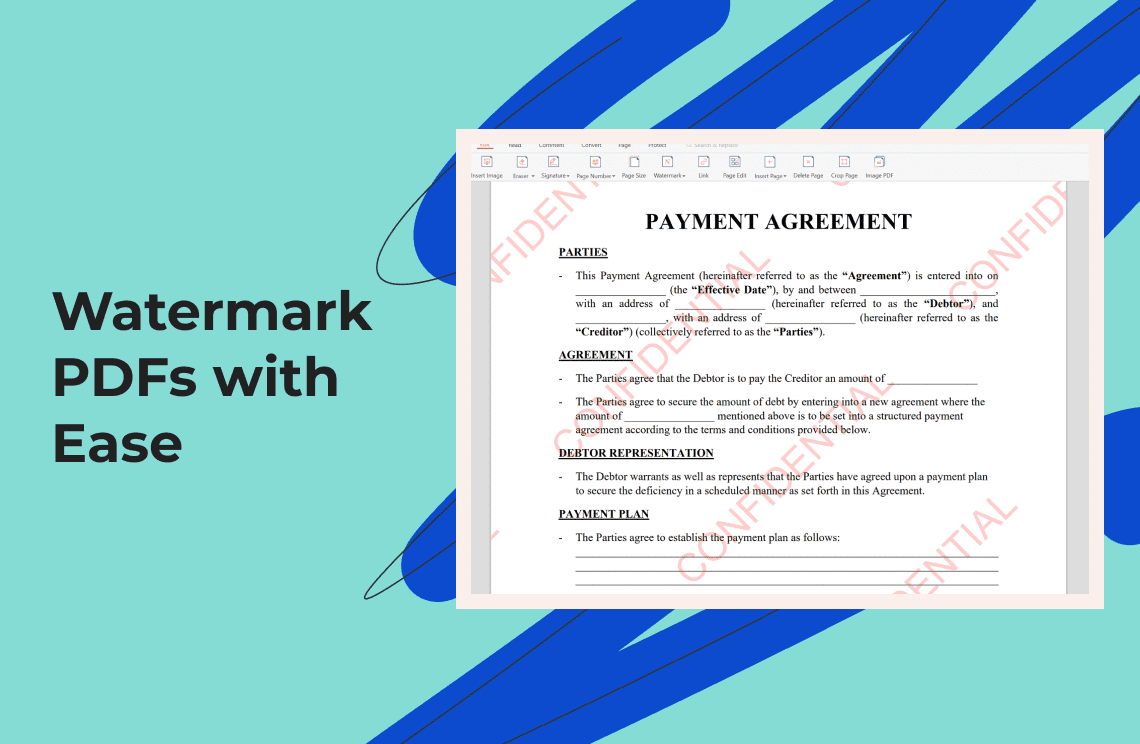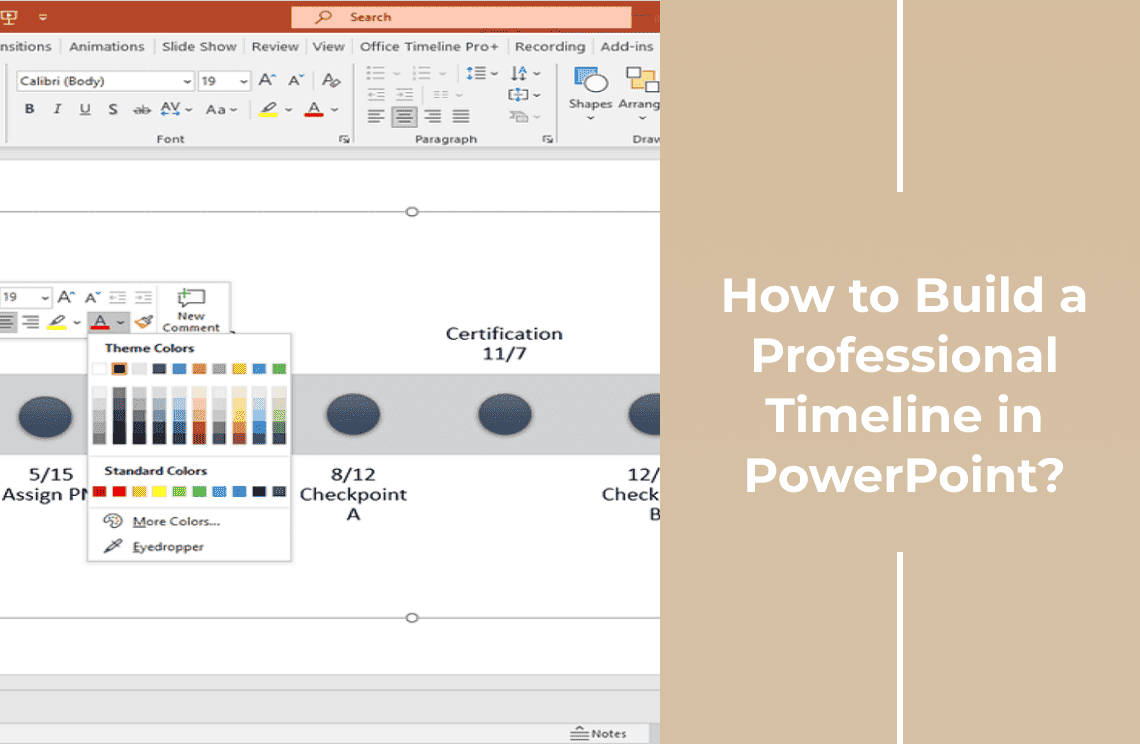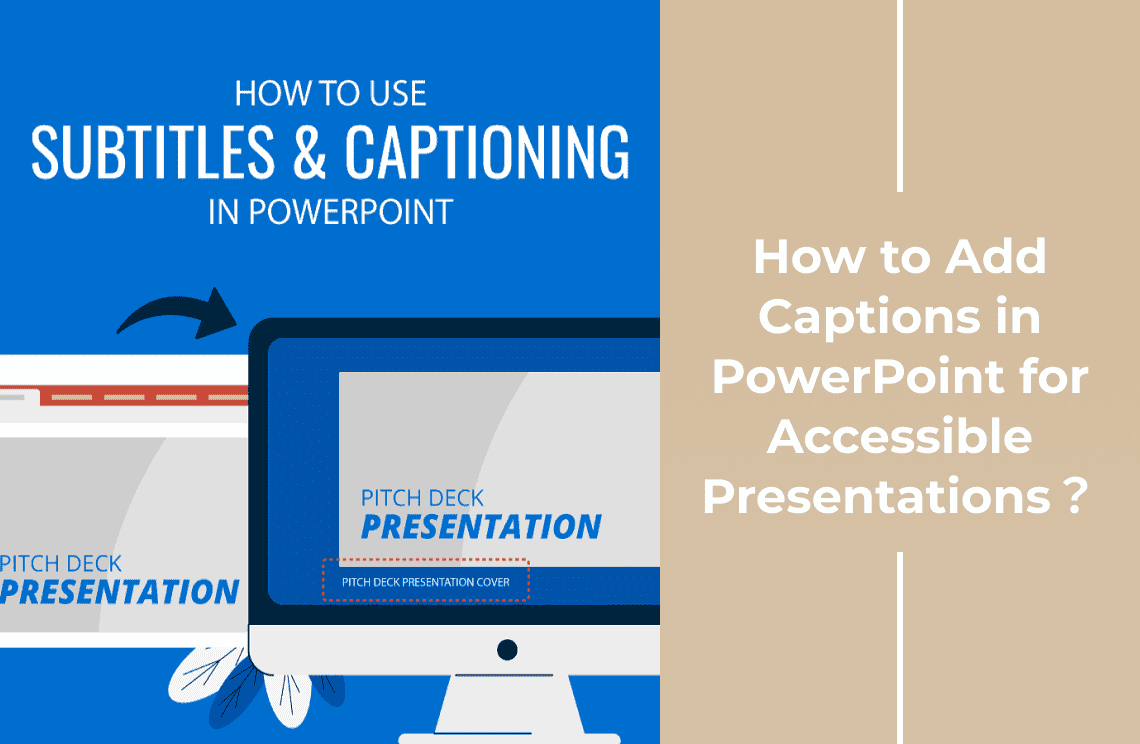Let's be honest - we've all grabbed an image off Google for a presentation at some point. But in today's world of copyright awareness and academic integrity, proper image citations have become non-negotiable. Whether you're a college student trying to avoid accidental plagiarism, a scientist preparing research findings, or a marketing professional creating client decks, how you credit images speaks volumes about your professionalism.
We have seen too many otherwise excellent presentations undermined by sloppy or missing citations. That's why I've put together this straightforward guide to the three most important citation styles (MLA, APA, and Chicago) for PowerPoint users. No jargon - just clear, practical steps you can implement immediately.
Plus, for those who need to convert their properly cited presentations into polished PDFs, tools like PDF Agile make it easy to preserve formatting while compressing files for sharing.
Let's make sure your next presentation is both visually stunning and ethically flawless!
Method 1: MLA-Style Image Citations
For academic rigor and publishing standards
1. Label Your Figure
Start with "Fig." in bold, followed by a sequential number and period.
For example:
Fig. 1.

2. Add Image Description
If the image has a title, use quotation marks (e.g., "Sunset Over Mountains"). For untitled works, briefly describe it, then add “from:”
Example:
Fig. 1. Pedestrians walking by street art graffiti of the word love from:
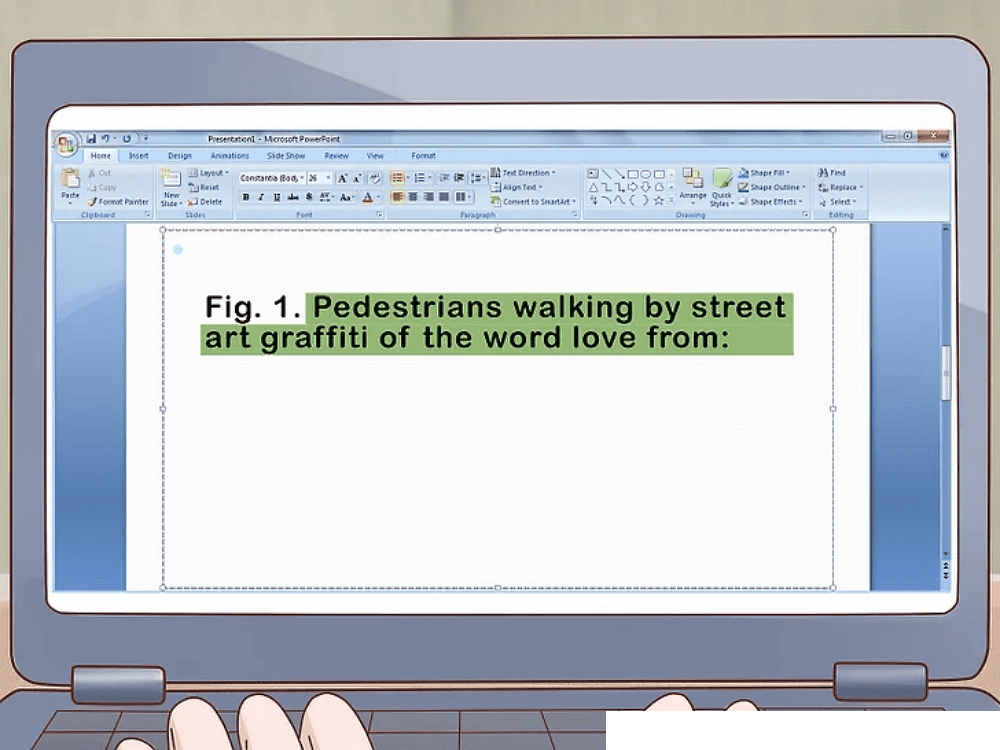
3. Cite the Source
Include the creator (if known), publication date, source website, and direct URL. MLA skips page numbers for digital images.
Example:
"Pedestrian Street Art Protest," 26 Dec. 2016, pxhere.com/en/photo/10722. Accessed 29 Oct. 2018.
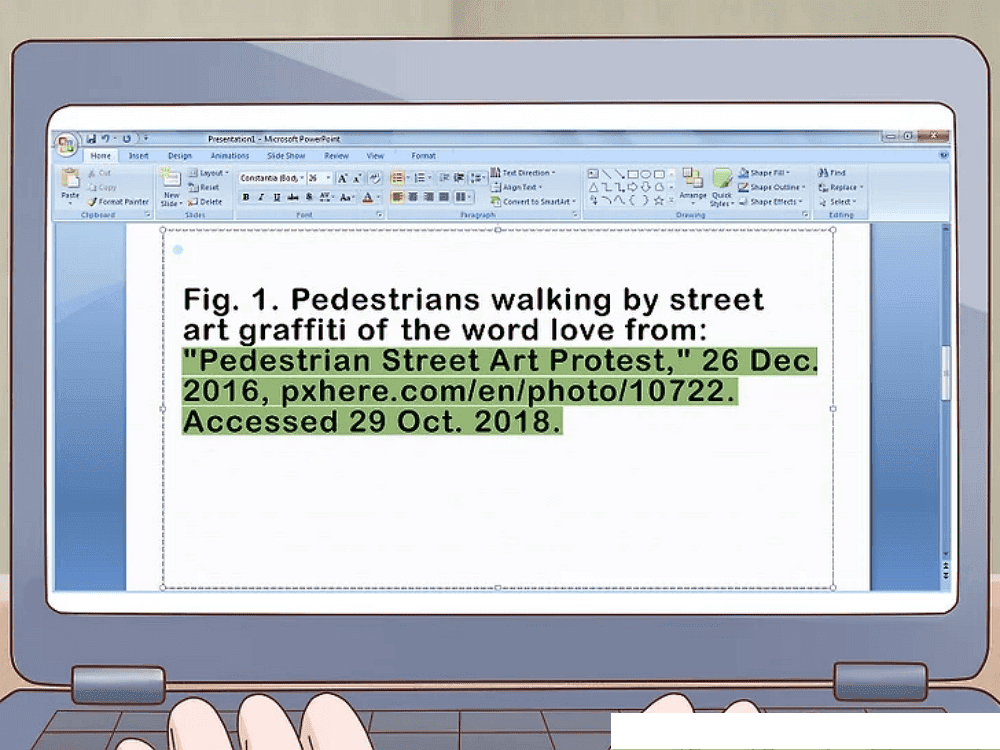
4. Note Copyright Status
Close with license details (e.g., Creative Commons CC0). No copyright info? Don't use the image.
Final Example:
Fig. 1. Pedestrians walking by street art graffiti of the word love from: "Pedestrian Street Art Protest," 26 Dec. 2016, pxhere.com/en/photo/10722. Accessed 29 Oct. 2018. Creative Commons CC0.
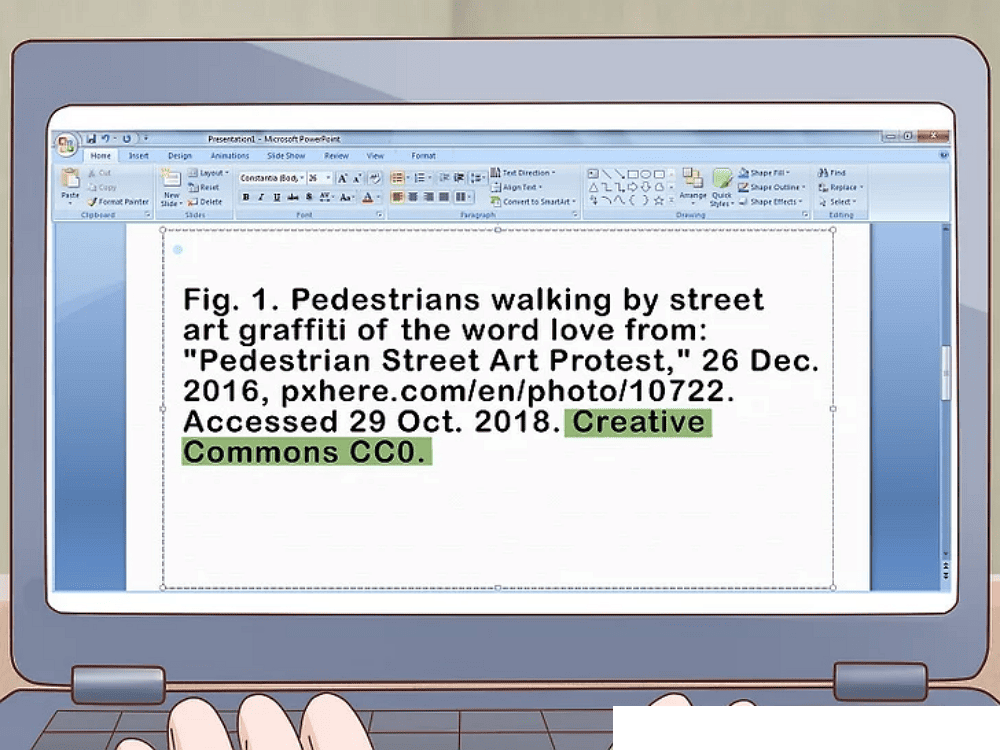
Pro Tips
- Use hanging indents for multi-line citations to match MLA papers
- Gray text (80% opacity) keeps captions subtle but readable
- Verify URLs with archive.org if linking to unstable sources
- Bold "Fig. X." for consistent visual hierarchy
Pros & Cons
| ✅ Advantages | ❌ Limitations |
| Meets university requirements | Time-consuming for casual decks |
| Self-contained (no separate Works Cited) | Long captions clutter minimalist slides |
| Verifiable source links | Requires manual updates if URLs break |
When to Use This:
We recommend MLA style only when your audience expects formal citations, like thesis defenses or journal submissions. For business decks, try Method 2's streamlined approach instead.
Method 2: APA-Style Image Citations
For psychology, science, and business presentations requiring formal attribution
1. Number Your Figure
Beneath the image, add Figure X. in italics (sequential numbering throughout).
Example:
Figure 1.
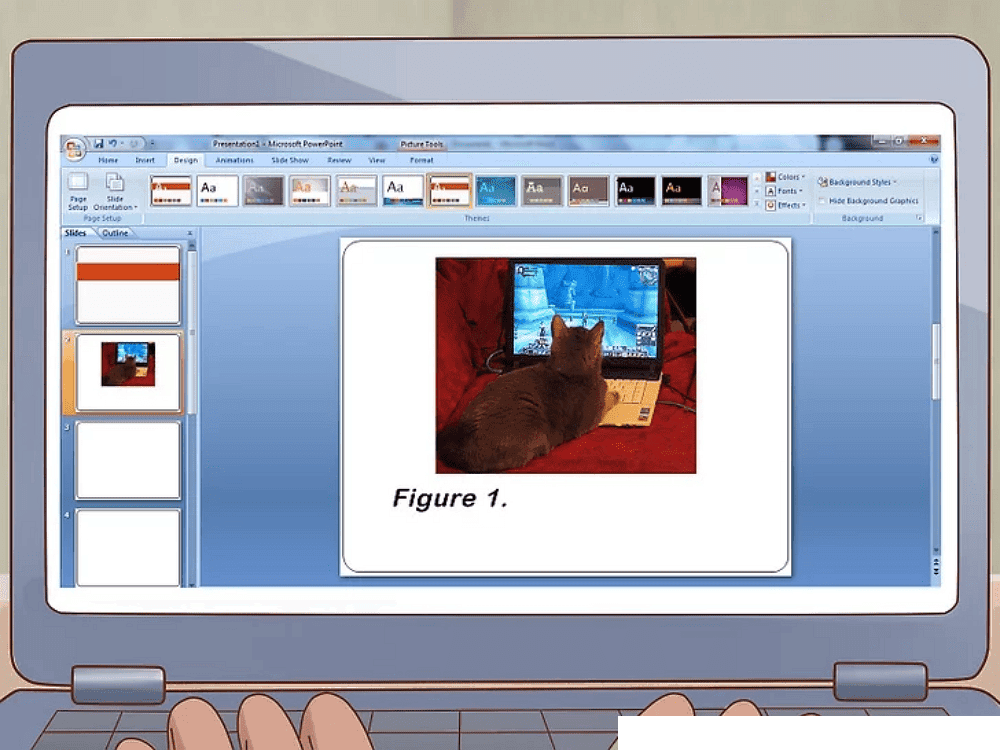
2. Describe the Image
Write a concise, sentence-style description (sentence case, ending with a period).
Example:
Figure 1. Cat watching World of Warcraft on a laptop.
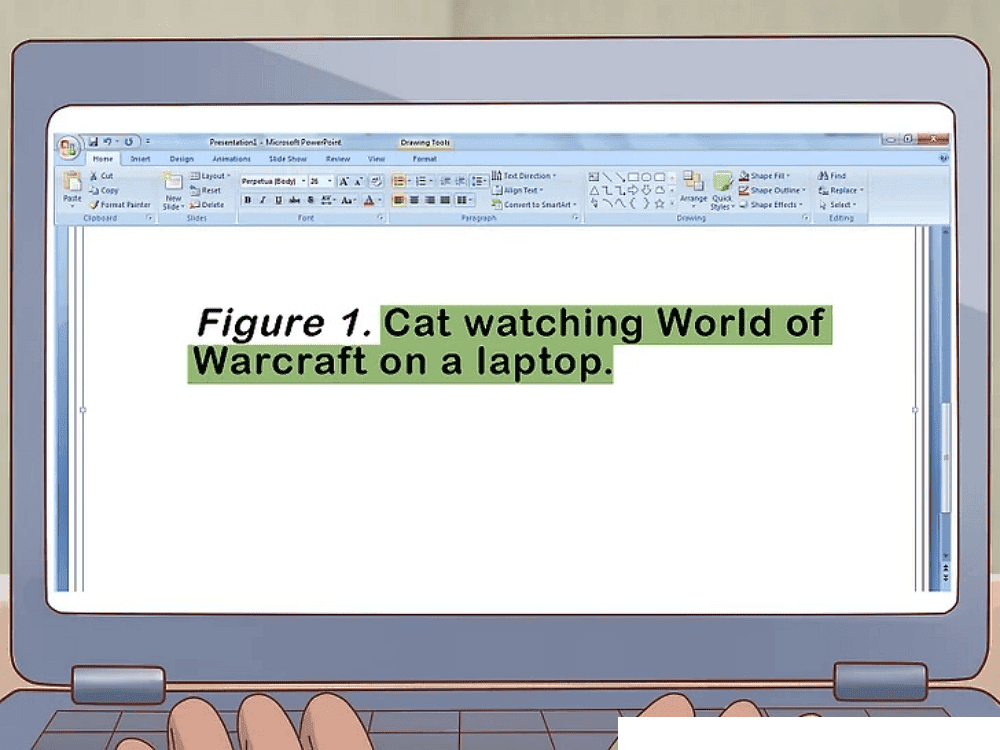
3. Credit the Source
Start with Adapted from, then add the image title in quotes, the creator's name, the year, and the direct URL.
Example:
*Adapted from "World of Warcraft Obsession," by Stacina, 2004, retrieved from flickr.com/photos/staci/14430768. *
Keep it concise but complete.
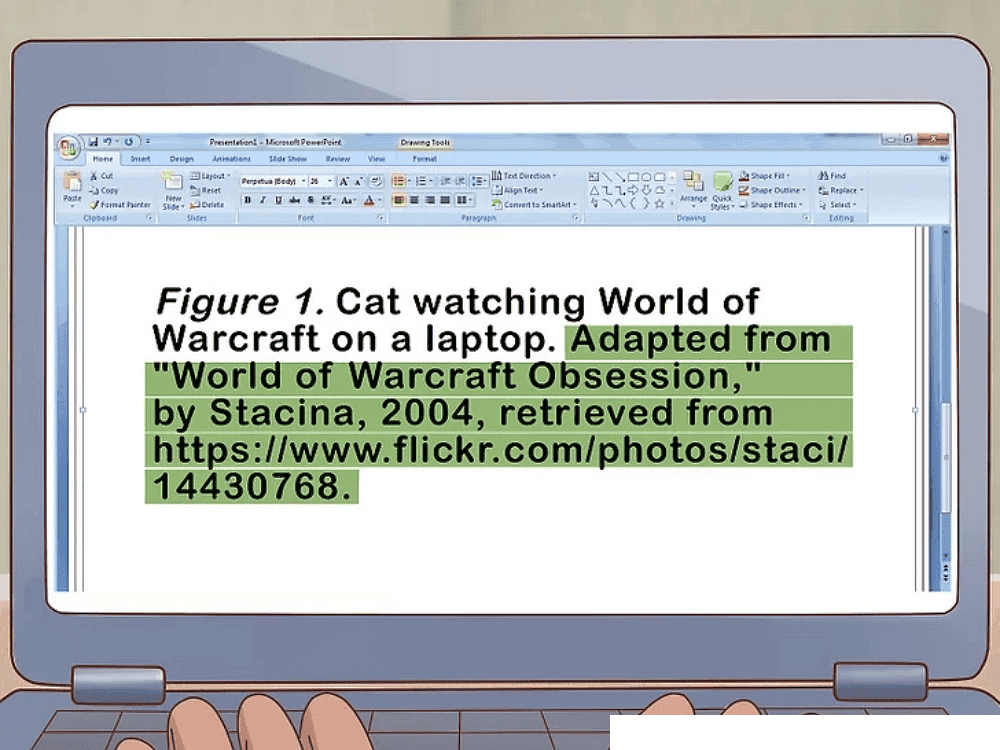
4. Add License/Copyright
Close with the license type (e.g., *CC BY-NC-SA 2.0*). No license? Don't use the image.
Final Example:
Figure 1. Cat watching World of Warcraft on a laptop. Adapted from "World of Warcraft Obsession," by Stacina, 2004, retrieved from flickr.com/photos/staci/14430768. CC BY-NC-SA 2.0.

5. Reference List Entry
Separately, include a full citation in your slide deck's reference list (last slide):
Example:
Stacina. (2004). World of Warcraft Obsession [photograph]. Retrieved from https://www.flickr.com/photos/staci/14430768.
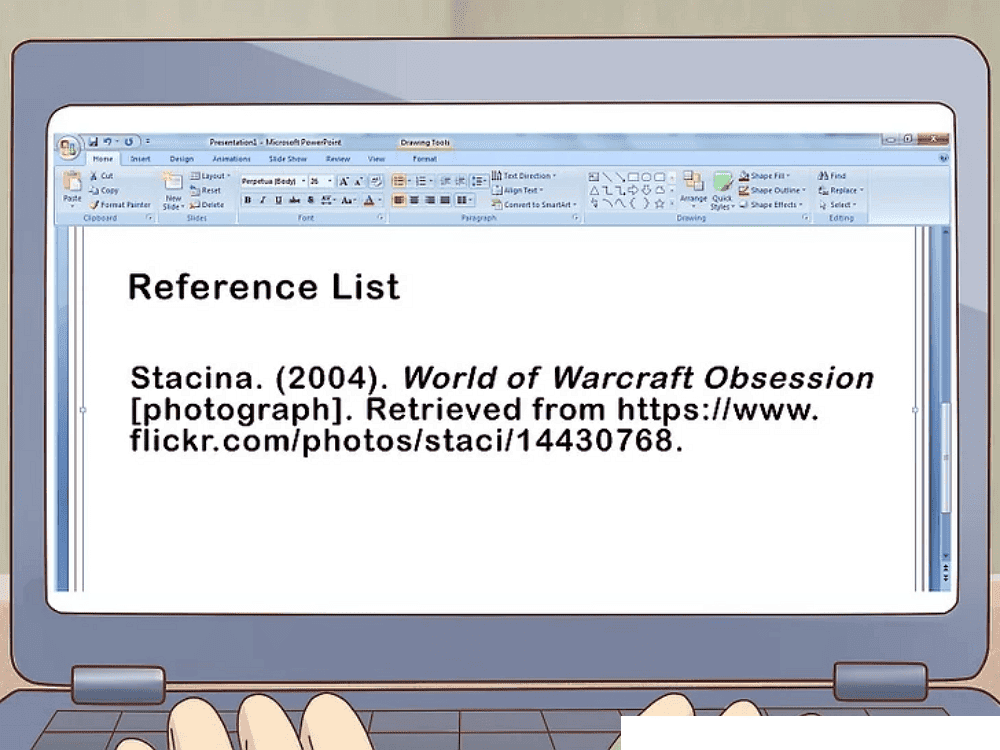
Pro Tips
- Italicize "Figure X" for APA compliance
- Use hanging indents in reference lists (tab: 0.5")
- Shorten URLs with bit.ly if space is tight
- Verify licenses before using CC images
Pros & Cons
| ✅ Advantages | ❌ Limitations |
| Cleaner than MLA (shorter captions) | Requires dual citations (caption + reference list) |
| Standard in scientific fields | URL breaks ruin credibility |
| Clear copyright compliance | Time-intensive for image-heavy decks |
Method 3: Chicago-Style Image Citations
For arts, history, and publications requiring detailed sourcing
1. Labeling the Figure
Begin by placing your figure label directly beneath the image using the format "Figure X," where X represents sequential numbering throughout your presentation. This simple but crucial step creates immediate visual organization and allows for easy reference in your accompanying notes.
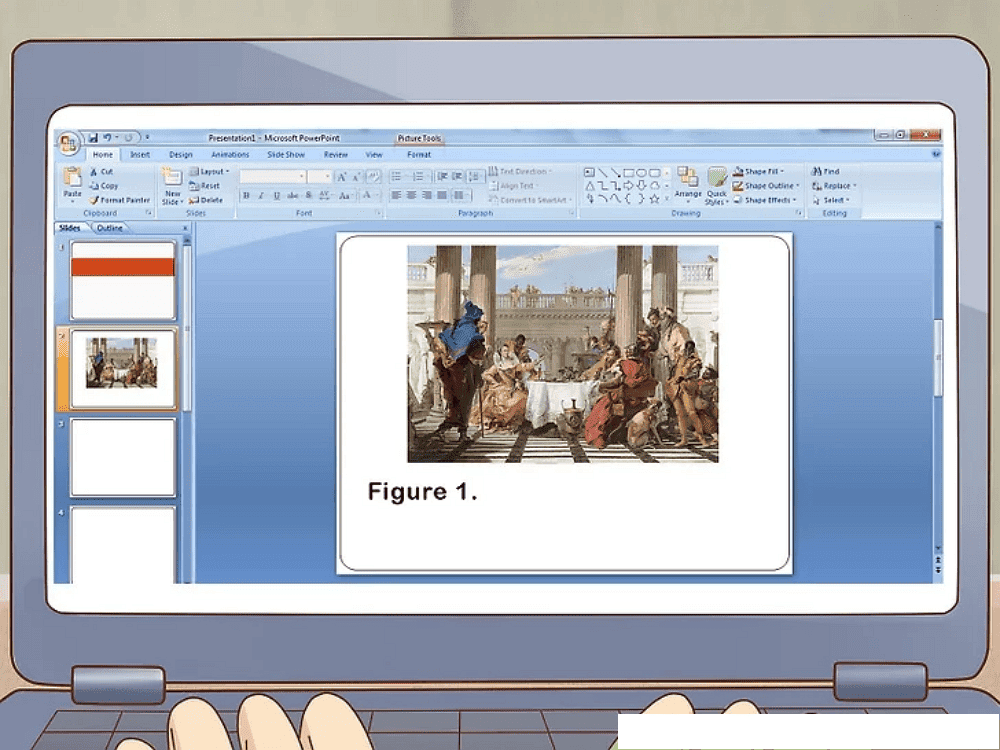
2. Crafting the Caption
Compose a brief but informative caption that includes the artwork's formal title and the artist's name, and explain the image's relevance to your presentation content. For example: "Figure 1. The Banquet of Cleopatra by Giambattista Tiepolo (1743-44) demonstrates..." This dual-purpose caption both identifies and contextualizes the image.
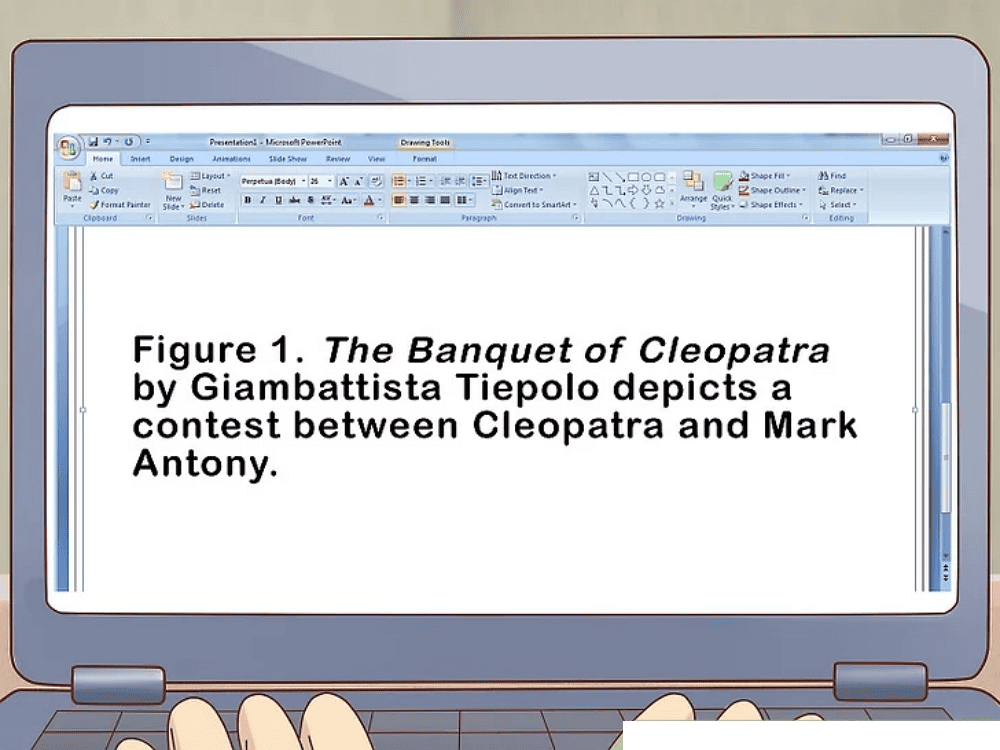
3. Creating the Citation Note
Prepare a full citation in either footnote or endnote format containing: the artist's full name, the work's title in italics, creation date, medium, current location or source, and access information. The citation should follow this structure:
"¹Giambattista Tiepolo, The Banquet of Cleopatra, 1743-44, oil on canvas, National Gallery of Victoria, accessed May 24, 2018, [URL]."
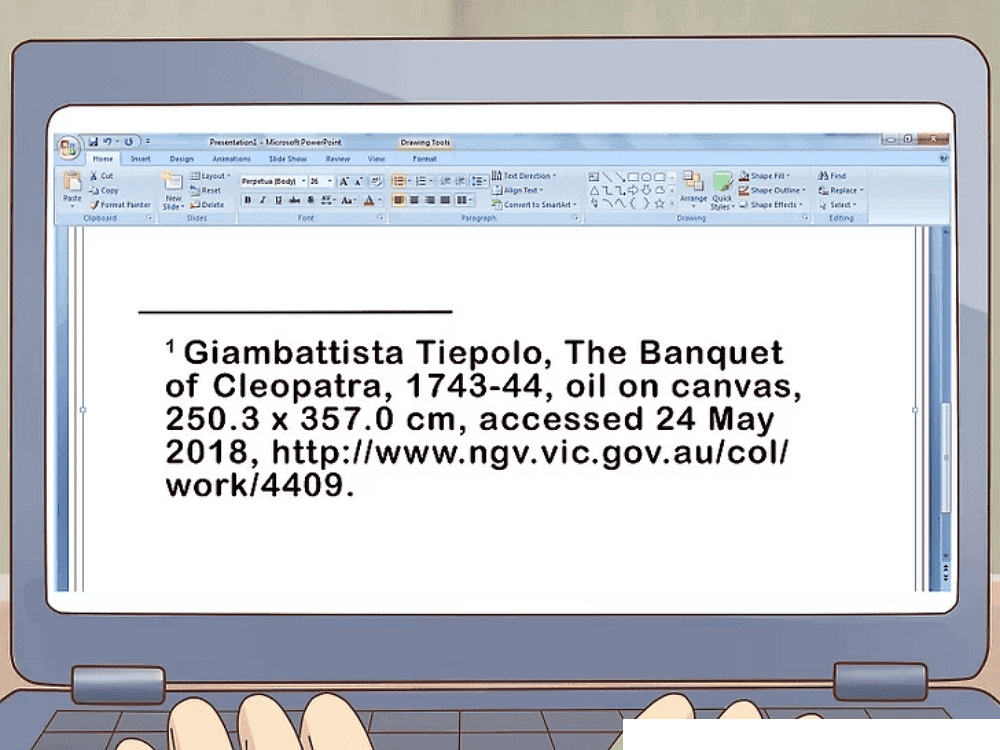
For Slide Decks:
- Use endnotes on a final "Sources" slide
- Match superscript numbers to figures (e.g., ¹ for Figure 1)
Pro Tips
- Italicize artwork titles but keep figure labels plain
- Use "accessed [date]" for online sources
- Shorten URLs for cleaner footnotes
Final Words: Cite Right, Present with Confidence
Think of image citations as your presentation's reference list - they're not just legal formalities, but proof you've done your homework. I've reviewed hundreds of slides where beautiful visuals were undermined by missing credits. The truth? Proper attribution actually makes you look more professional.
Each citation style serves a purpose:
- MLA keeps your English professor happy
- APA gives your research credibility
- Chicago shows art historians you mean business
Remember, tools like PDF Agile can help you convert, compress and secure your presentation once your slides are polished and properly cited for sharing. And the plus point is you will not lose any of your hard work's uprightness. So, go create presentations that impress and respect intellectual belongings!


